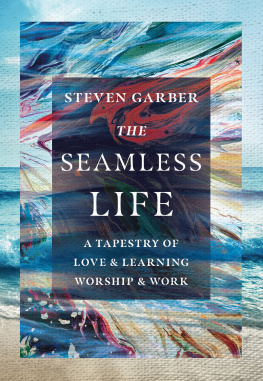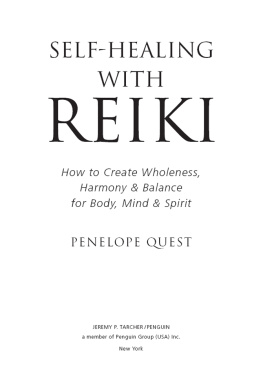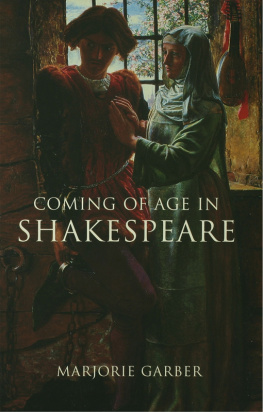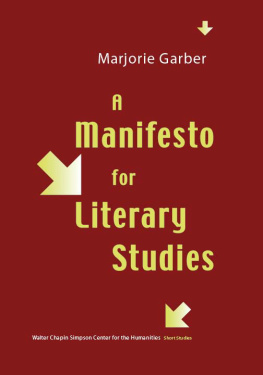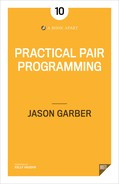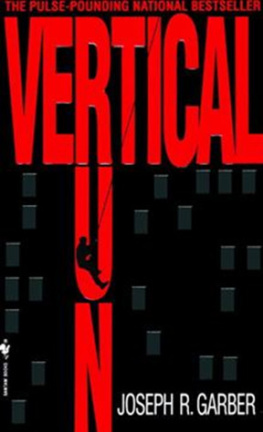Harmony in Healing
Harmony in Healing
The Theoretical Basis of Ancient and Medieval Medicine
James J. Garber
First published 2008 by Transaction Publishers
Published 2017 by Routledge
2 Park Square, Milton Park, Abingdon, Oxon OX14 4RN
711 Third Avenue, New York, NY 10017, USA
Routledge is an imprint of the Taylor & Francis Group, an informa business
Copyright 2008 by Taylor & Francis.
All rights reserved. No part of this book may be reprinted or reproduced or utilised in any form or by any electronic, mechanical, or other means, now known or hereafter invented, including photocopying and recording, or in any information storage or retrieval system, without permission in writing from the publishers.
Notice:
Product or corporate names may be trademarks or registered trademarks, and are used only for identification and explanation without intent to infringe.
Library of Congress Catalog Number: 2007052484
Library of Congress Cataloging-in-Publication Data
Garber, James J.
Harmony in healing : the theoretical basis of ancient and medieval medicine / James J. Garber.
p. ; cm.
Includes bibliographical references and index.
ISBN 978-1-4128-0692-3 (alk. paper)
1. Medicine, Ancient. 2. Medicine, Medieval. 3. Medicine--Philosophy--History. I. Title.
[DNLM: 1. History, Ancient. 2. History, Medieval. 3. Philosophy, Medical--history. WZ 51 G213h 2008]
R135.G37 2008
610.1--dc22
2007052484
ISBN 13: 978-1-4128-0692-3 (hbk)
Dedicated to my wife Rachel and our adult family:
Ann, Clare, Jim, Suzanne, Dave, John and Pete
Several years ago I was faced with the need to find a topic for my masters thesis in astronomy and it became apparent that there was an historical and philosophical connection between medicine and the stars. I have spent most of my professional life in medicine. However, I had also maintained a continual interest in astronomy along with philosophy and history. I thought rather than a technical astronomical thesis, an armchair topic might be more to my liking at this stage of life I had already spent many (frigid) hours peering through a telescope and working through complex mathematical problems. It was time to relax a bit. For a history of astronomy course I had researched the topic of Cepheid variables and found this comer of astronomy filled with all kinds of philosophical and religious overtones. It was soon evident that medicine, too, was intricately entangled with astronomy. Finally, it seemed possible for me to mix into one scholarly stew all those interests that had been simmering in my consciousness for so many years.
From the masters thesis grew a doctoral dissertation and now this book. I hope it will shed light on both astronomy and medicine as well as provide a better understanding of history and human nature.
James J. Garber
I want to thank the many teachers Ive had over the yearstoo many to listbut all very important in the academics that led up to the creation of this book. It has been a long, enjoyable journey. Special thanks must go to my doctoral advisor, Professor Naomi Lichtenberg, who not only gave me direction but also helped develop the writing skills necessary for such a work. Thanks also to Professors John R. Christianson and Marie Maher who reviewed the dissertation. The Rochester, Minnesota Public Library was instrumental in obtaining needed resources in a timely manner. And to my wife and best friend I owe thanks for her encouragement, suggestions and the many hours she spent editing all my writings over the past six years.
To my breakfast friends, all college teachers, I am grateful for their continuing stimulation and support. Special thanks to Marie Miller with her sharp eyes and keen mind was invaluable in making this book presentable. Lastly, appreciation goes to Laurence Mintz of Transaction Publishing for his patience in this my first literary foray.
I also wish to express my gratitude for the most gracious permission of Her Majesty, Queen Elizabeth II, for the use of the reproduction of the Leonardo da Vinci drawing () from the Windsor Castle Library.
Medicine and astronomy appear at first glance to be the original odd couple. However, as we shall see, it was a union whose progeny were to populate the Western world for more than two millennia. They are, arguably, the oldest of all the sciences, The Greeks, beginning with Thales in the sixth century B.C.E., sought a unifying principle to explain the world as a whole. Because cosmology and medicine were among the few known sciences at the time, it was natural that these two apparently disparate disciplines should be combined to provide the theoretical foundations of medicinefoundations that were to survive for nearly 2,400 years. This scientific structure rested firmly on the ancient principles of cosmology, astronomy, and the concept of universal harmony. This book tells the tale of these theoretical underpinnings and how they influenced humankinds efforts to maintain health and fight disease. It was a futile effort because the system was fundamentally flawed. Nonetheless, it lingered for centuries beyond what common sense tells us it should have.
No comprehensive analysis of the cosmology-medicine relationship has been undertaken in the astronomical or medical literature. For better or (mostly) for worse, these cosmological principles have had profound effects on the theory and practice of medicine over the centuries. It is time for historians, astronomers, physicians, and philosophers to acquaint themselves with the impact early cosmology has had on medicine. Awareness of this linkage can help us better understand not only past but present-day medicine.
From Antiquity, many healers have been astronomer-physicians, including such thinkers as Pythagoras, Hippocrates, Empedocles, and Eudoxus. Some notables, such as Aristotle, Manilius, Ptolemy, Firmicus, Augustine of Hippo, Albertus Magnus, and a host of others, though not trained in medicine, tried their hand at healing, astronomy and/or astrology. It was not uncommon for past scholars (polymaths) to be involved in many intellectual pursuits. Hippocrates (or his disciples) was convinced that knowledge of astronomy, including meteorology, was essential to the practice of medicine:
For knowing the changes of the seasons, and the risings and settings of the stars, with the circumstances of each of these phenomena, he (the physician) will know beforehand the nature of the year that is coming, through these considerations and by learning the times beforehand, he will have full knowledge of each particular case (patient), will succeed best in securing health, and will achieve the greatest triumphs in the practice of his art. If it be thought that all this belongs to meteorology, he will find out, on second thought, that the contribution of astronomy to medicine is not a very small one but a very great one, indeed.
From these early times to the present, the fancied or real impact of astronomy on health has persisted in a continuous parade of practitioners of both sciences. The first purpose of this book is to establish, in a complete and organized manner, how cosmology, astronomy and universal harmony have provided the theoretical foundations for the practice of medicine in Antiquity and the Middle Ages. Although much has been written about ancient and medieval medicine, including its basic theoretical foundations, until now no thoroughgoing, coherent exegesis of this area of pre-modern medicine has been attempted. It will be demonstrated, using primary sources, that the cosmology of the ancients provides not only the theoretical basis for the etiology of disease but also the rationale for its treatment. Material from prehistory is presented including mythical, philosophical, and historical evidence, to support the thesis that universal harmony, as found in the cosmology of the ancients, formed the basis for medical practice well into the nineteenth century.




